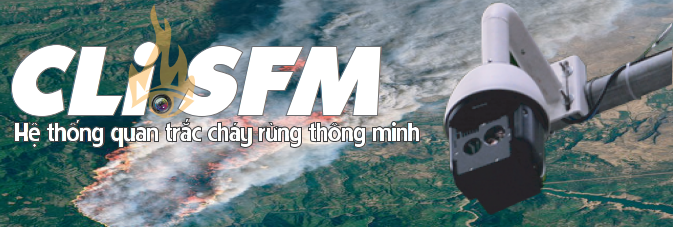INTELLIGENT FOREST FIRE MONITORING SYSTEM
CLi SFM forest fire early warning system is a solution that integrates advanced technology underpinning Industry 4.0, including: Sensors for measuring air quality, temperature, humidity, and urban environmental quality assessment or early fire warning...
Connecting to a smart city monitoring system using multi-spectral image analysis using Artificial Intelligence (AI) to detect smoke and fire from long distances; A low-power wide-area wireless network (LPWAN) connects data to a high-performance computing center using numerical modeling to detect anomalies and provide real-time alerts on GIS maps over Internet.
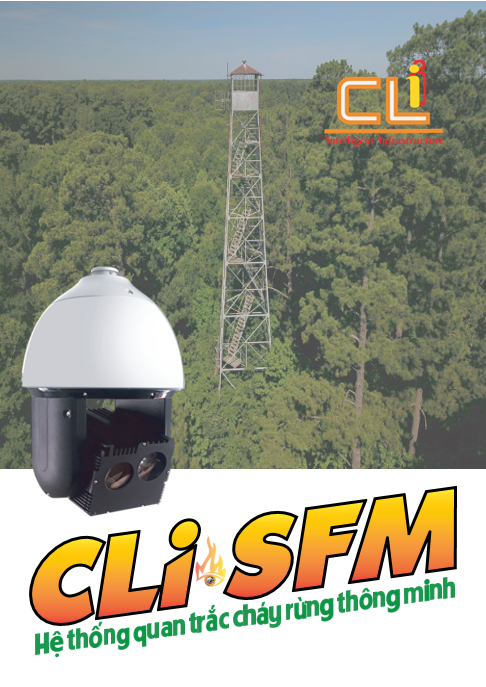
The system is integrated with an automatic scanning unit controlled by a powerful industrial computer with Artificial Intelligence software installed that automatically analyzes images, searches and detects smoke and fire areas, based on image location and coordinates of the electronic monitoring station, the camera's view to calculate the coordinates of the suspected fire point, zoom to 36x for high resolution images and send it to the regional forest fire monitoring command center. SFM integrates 3G/4G communication.
Combines high-definition imaging systems with image processing software that uses Artificial Intelligence (AI) processing algorithms and optically scans the areas that detect the earliest signs of smoke to alert alert at the control center to monitor and alert the operator to the problem location. Operators can use a range of tools including the optical sensors' 36X zoom lens capabilities and image processing tools to determine if action is possible. Smoke columns are identified on the basis of GIS maps and refer to available geographical information to determine the appropriate handling force.
System advantages
Reduce fire detection and dispatch time
The auto-detection system alerts system operators to an event in the first place and gives them the tools to monitor progress and coordinate responses with a single click.
Dramatically increase situational awareness while reducing staff costs
A single operator can monitor using the multi-monitor view expanding their field of vision while reducing blind spots. Automated alerts also help combat fatigue and human error.
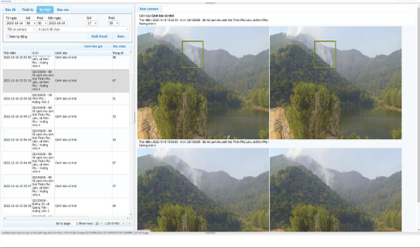
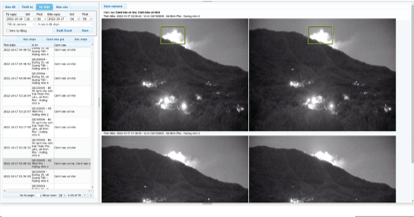
Software interface of Intelligent forest fire monitoring system
Day-night detection, 24/7 protection
Traditional observers cannot observe when it is dark, but the system still works automatically, monitoring day and night. Infrared and near-infrared spectral sensing technology for enhanced detection sensitivity after dark. SFM multi-spectral intelligent monitoring technology integrates a color image sensor in the visible wavelength spectrum of the human eye (380-740nm) and a near-infrared spectrum sensor (700-1100nm) in the invisible human eye area. Weather data and real-time images.
Automatic detection system is an important tool in monitoring and responding to incidents when they occur. Live images and other information obtained from system sensors (e.g. temperature, wind speed, wind direction) can greatly assist authorities in coordinating and regulating their response to changing situations. More effective for coordinating with firefighters, authorities to reduce risks and destroyed property.
Use year-round not only for fire detection and decision support, but also for off-season uses such as monitoring to combat arson, poaching and theft, and to monitor carbon emissions. Archive function for post-event analysis, providing visual evidence.
IoT GAS QUALITY MONITORING SYSTEM
The IoT gas quality monitoring system uses a super energy-saving microprocessor, integrating sensors to measure temperature, pressure, humidity, wind direction and speed, fine dust PM2.5/PM10, CO, CO2, NH4…
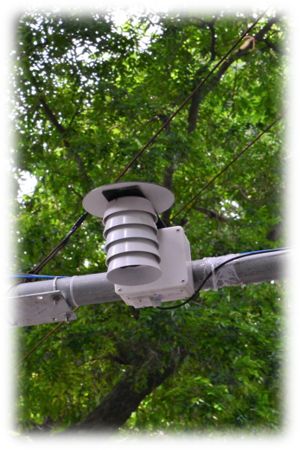
SAS automatically analyzes the data continuously and generates alerts for abnormal changes in dust and gas often generated by forest fires. Working automatically with renewable electricity from solar energy, the SAS installed in a grid in the forest with wind direction survey can generate a forest fire alarm after the time it takes to propagate from the fire to the sensor. For example, a sensor grid with a distance of 5km at a point, with a wind speed of 5m/s, the fire will be alerted at least after 1000 seconds of onset, ie less than 20 minutes. SAS transmits information on the LPWAN network. - Technology foundation of the Industrial Revolution4.0.
For the detailed information about our solution, please contact our Technical Consulting Department for the best service!



